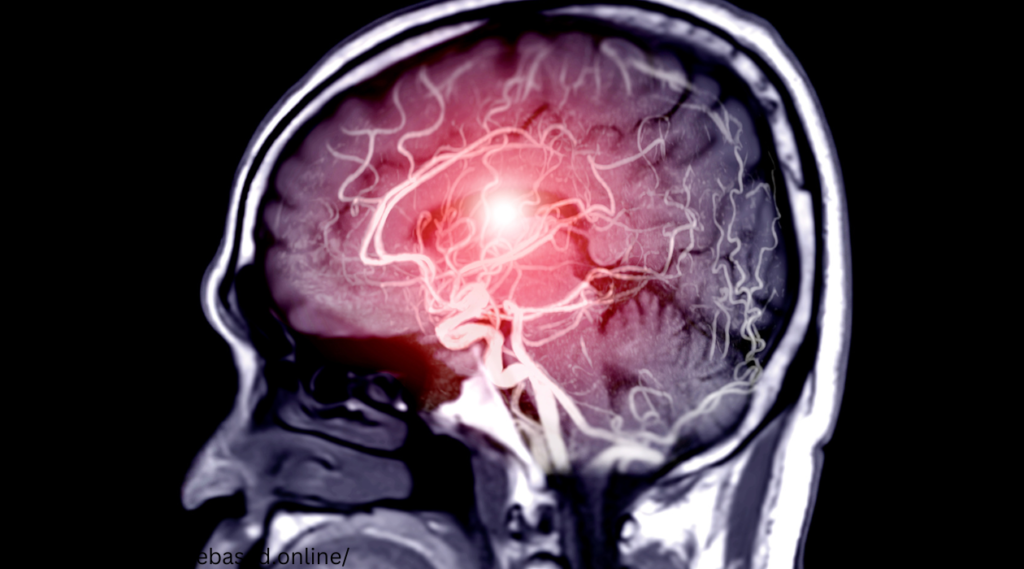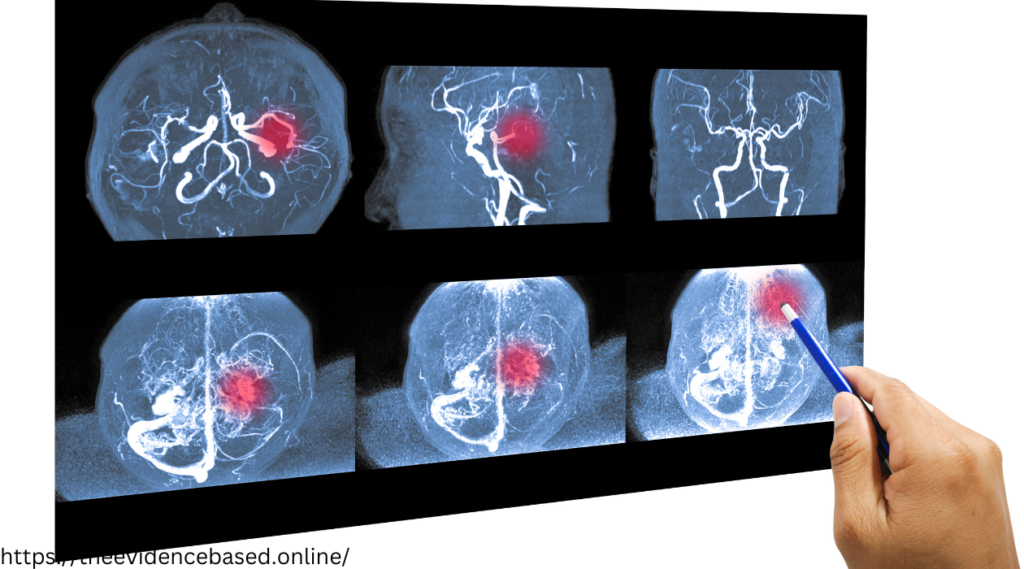Brain-ruptured aneurysms are silent threats, often manifesting without warning and sometimes with devastating consequences. With the potential to strike anyone, at any age, understanding the intricacies of this condition is not only life-saving but also an essential element of healthcare literacy. In this comprehensive guide, we will take a deep dive into the world of brain ruptured aneurysms, catering to healthcare professionals, aneurysm survivors, and medical enthusiasts seeking to enhance their knowledge on this critical health issue.

Introduction to Brain Ruptured Aneurysms
Imagine a balloon with a weak spot in its wall. If the pressure inside the balloon causes that weak spot to dilate too far, it could burst. The same principle applies to aneurysms in the brain. These bulging, weaker sections of blood vessels can rupture, leading to a life-threatening bleed in the brain, known as a subarachnoid hemorrhage (SAH). The significance of brain ruptured aneurysms lies not only in their potential to cause severe disability or death but also in the stealthy manner in which they operate, often providing no warning signs until it is too late.
Understanding Brain Aneurysms
What are Brain Aneurysms?
Brain aneurysms, also called cerebral or intracranial aneurysms, are abnormal pouching in a blood vessel in the brain. They are typically congenital, but can also develop over time due to various factors such as high blood pressure, atherosclerosis, or head trauma. Their presence is usually asymptomatic, making them particularly dangerous as they can grow and weaken without the individual’s knowledge. They are not uncommon, affecting about 5% of the population, with most individuals leading a normal life without any adverse effects from the aneurysm.
Causes and Risk Factors
The exact cause of brain aneurysms is not fully understood, but it is believed that a combination of genetic and environmental factors plays a significant role. Conditions that increase the risk of aneurysm formation include:
- Family history of brain aneurysms or other types of aneurysms
- Polycystic kidney disease
- Certain genetic disorders that affect the body’s connective tissue
- Advanced age
- Hypertension
- Smoking
- Excessive alcohol consumption
Understanding these factors and the complex interplay that leads to aneurysm formation is crucial for both prevention and treatment strategies.
Types of Brain Aneurysms
There are two primary types of brain aneurysms based on their structure and location:
- Saccular Aneurysms: The most common type, saccular aneurysms have a pouch shape and are usually found at the branching points of larger arteries.
- Fusiform Aneurysms: Less common, these aneurysms involve the entire circumference of the artery and do not have a distinct neck.
The type of aneurysm can often dictate the approach to treatment, as well as provide insights into the likelihood of rupture and necessary preventative measures.
Symptoms and Diagnosis
Common Symptoms of a Ruptured Brain Aneurysm
Aneurysms can often go unnoticed for years, but when they do present with symptoms, they can be quite alarming. Some of the common signs of a ruptured brain aneurysm include:

- Sudden, severe headache that is different from past headaches
- Nausea and vomiting
- Stiff neck
- Blurred or double vision
- Sensitivity to light
- Seizure
- Loss of consciousness
- Confusion
It is important to understand that these symptoms can vary widely from person to person, and some individuals may not exhibit any symptoms until the aneurysm ruptures.
Diagnostic Procedures and Tests
The diagnosis of a brain aneurysm starts with a patient history and a physical exam. However, definitive diagnosis often requires imaging studies such as:
- CT (computed tomography) scan: An initial imaging test that can detect bleeding in the brain and is often used in the emergency setting for rapid diagnosis.
- Magnetic resonance imaging (MRI): Provides a detailed view of the brain and is commonly used when a suspected aneurysm is not seen on a CT scan.
- Cerebral angiography: A type of X-ray that uses a special dye to see the arteries in the brain and is considered the gold standard for visualizing aneurysms.
Deciphering the best approach to imaging and diagnosis is crucial, as early detection can greatly improve patient outcomes.
Treatment Options
When it comes to brain ruptured aneurysms, timing is everything. Swift and appropriate treatment can make the difference between life and death, or between a full recovery and a lifetime of disability.
Surgical Interventions
Surgery for a ruptured brain aneurysm can take several forms, each with its own set of benefits and risks:
- Clipping: Involves the placement of a metal clip at the base of the aneurysm to isolate it from the normal blood flow, essentially preventing further rupture.
- Coil Embolization: An endovascular approach where tiny coils are inserted into the aneurysm, promoting clotting and sealing off the aneurysm from the normal circulation.
- Flow Diversion: A relatively newer technique that involves placement of a stent-like device across the neck of the aneurysm to disrupt the blood flow, promoting healing of the damaged vessel.
Endovascular Procedures
Endovascular treatment options have expanded significantly over the past few decades, offering minimally invasive alternatives to traditional open surgeries. These approaches can often lead to shorter recovery times and reduced risk of complications, but are not suitable for every aneurysm or patient case.
LEARN ABOUT MORE DIFFERENT POST
Recovery and Rehabilitation
Recovering from a ruptured brain aneurysm can be a long and arduous process. Patients may require intensive care, rehabilitation services, and ongoing support.
- Physical Therapy: Helps restore physical mobility and strength, especially for those who have experienced weakness or paralysis.
- Occupational Therapy: Aids in the re-acquisition of skills for daily living tasks, often with a focus on cognitive and fine motor skills.
- Speech Therapy: Crucial for patients who have experienced language or speech difficulties as a result of the aneurysm or its treatment.
Developing a comprehensive recovery plan in conjunction with healthcare providers is essential for ensuring the best possible recovery outcomes.
Support and Resources for Aneurysm Survivors
Support Groups
Joining an aneurysm or SAH support group can be incredibly beneficial for survivors and their families. These groups provide a safe space to share experiences, learn from others, and gain emotional support during the recovery process.
Coping Mechanisms
Discovering healthy coping mechanisms is a vital component of life post-aneurysm. This might involve mindfulness practices, engaging in enjoyable activities, seeking professional counseling, or even finding solace in spirituality.
Rehabilitation Services
Engagement with rehabilitation services is often a long-term endeavor, focusing on reintegration into daily life, workforce participation, and overall quality of life.
Prevention and Lifestyle Strategies
Lifestyle Changes to Reduce the Risk of Aneurysm Rupture
While not all aneurysms can be prevented, there are lifestyle changes that can help reduce the risk of rupture for those who have been diagnosed with an unruptured aneurysm, or for individuals who may be at risk due to family history or other factors:
- Managing High Blood Pressure: One of the key modifiable risk factors that significantly influences the development and rupture of aneurysms.
- Cessation of Smoking: Smoking is known to weaken blood vessels, and is a significant risk factor for aneurysm rupture.
- Healthy Diet and Exercise: These play a role in maintaining overall vascular health and can contribute to reducing aneurysm risk.
Importance of Regular Screenings and Check-Ups
For those with a family history of aneurysms or other relevant risk factors, regular screenings and check-ups can play a critical role in early detection and intervention. These may include imaging studies such as MRI or MRA (magnetic resonance angiography), which can detect the presence of an unruptured aneurysm before it becomes life-threatening.
Conclusion
Brain-ruptured aneurysms are complex and potentially life-altering conditions that require a multifaceted approach to management. By understanding the nature of aneurysms, the symptoms of ruptures, treatment options, and the resources available to survivors, we equip ourselves with the knowledge to address this health issue proactively. Early detection and prompt medical intervention are key to enhancing patient outcomes. Therefore, it is imperative for healthcare professionals and individuals alike to stay informed and to spread awareness that could save lives.
Raising public awareness about brain-ruptured aneurysms is not only a medical imperative but a societal one. It prompts discussions, encourages screenings, and underscores the importance of research and treatment advancements. By advocating for better understanding and proactive measures, we take significant steps in bolstering our healthcare systems and in empowering individuals to take charge of their vascular health. Aneurysms may be silent, but through knowledge and action, we can ensure that they do not go unheard or unchecked.